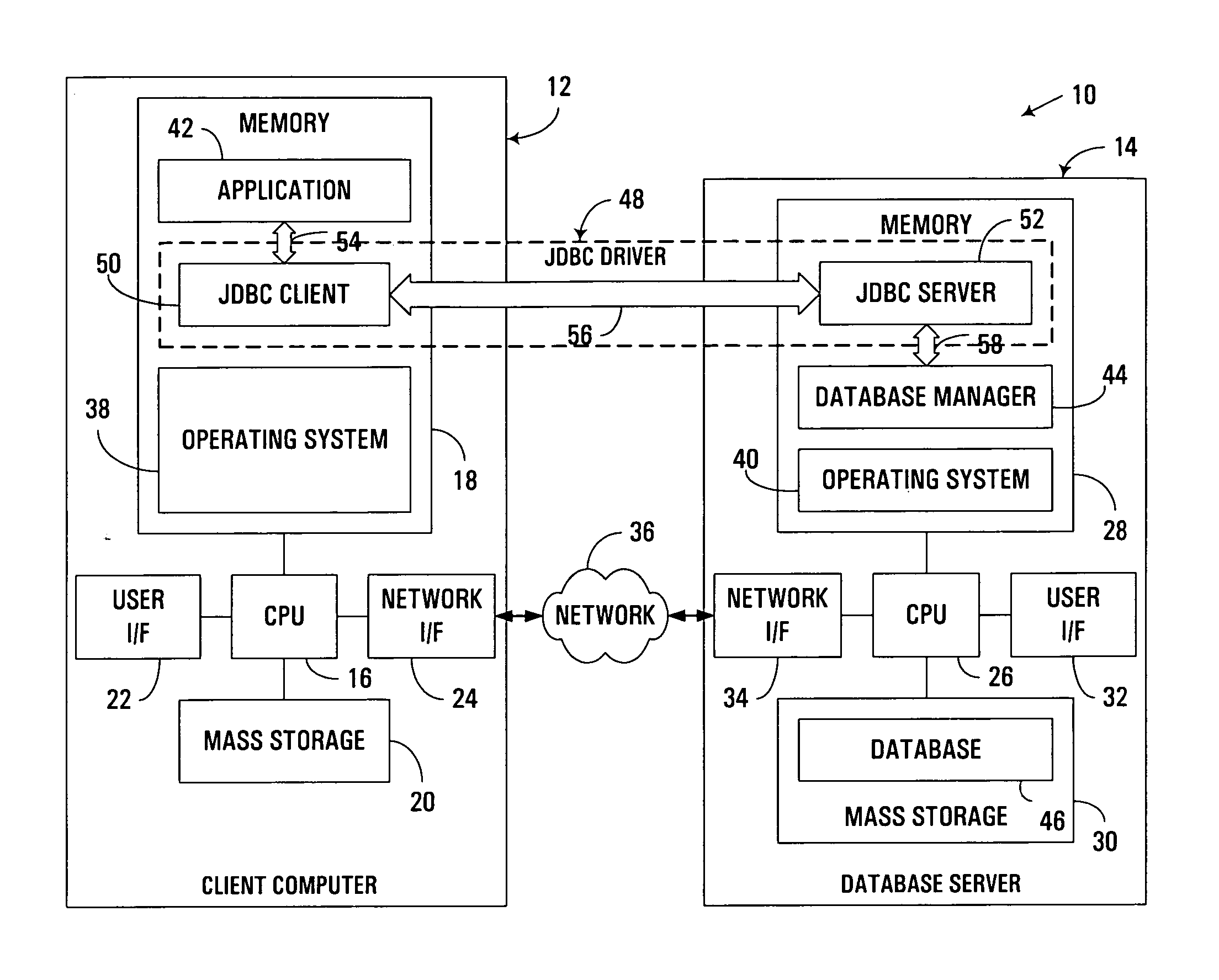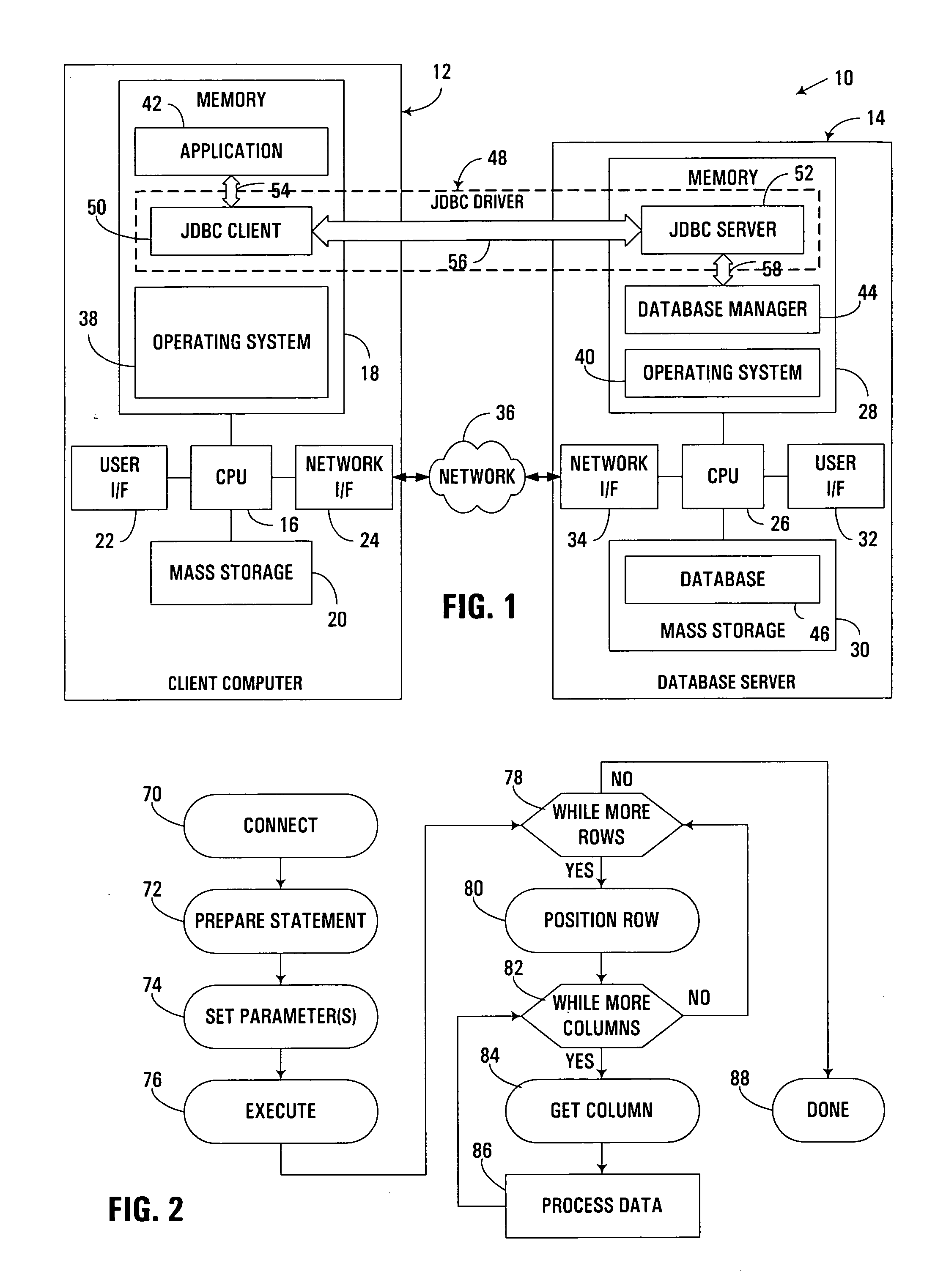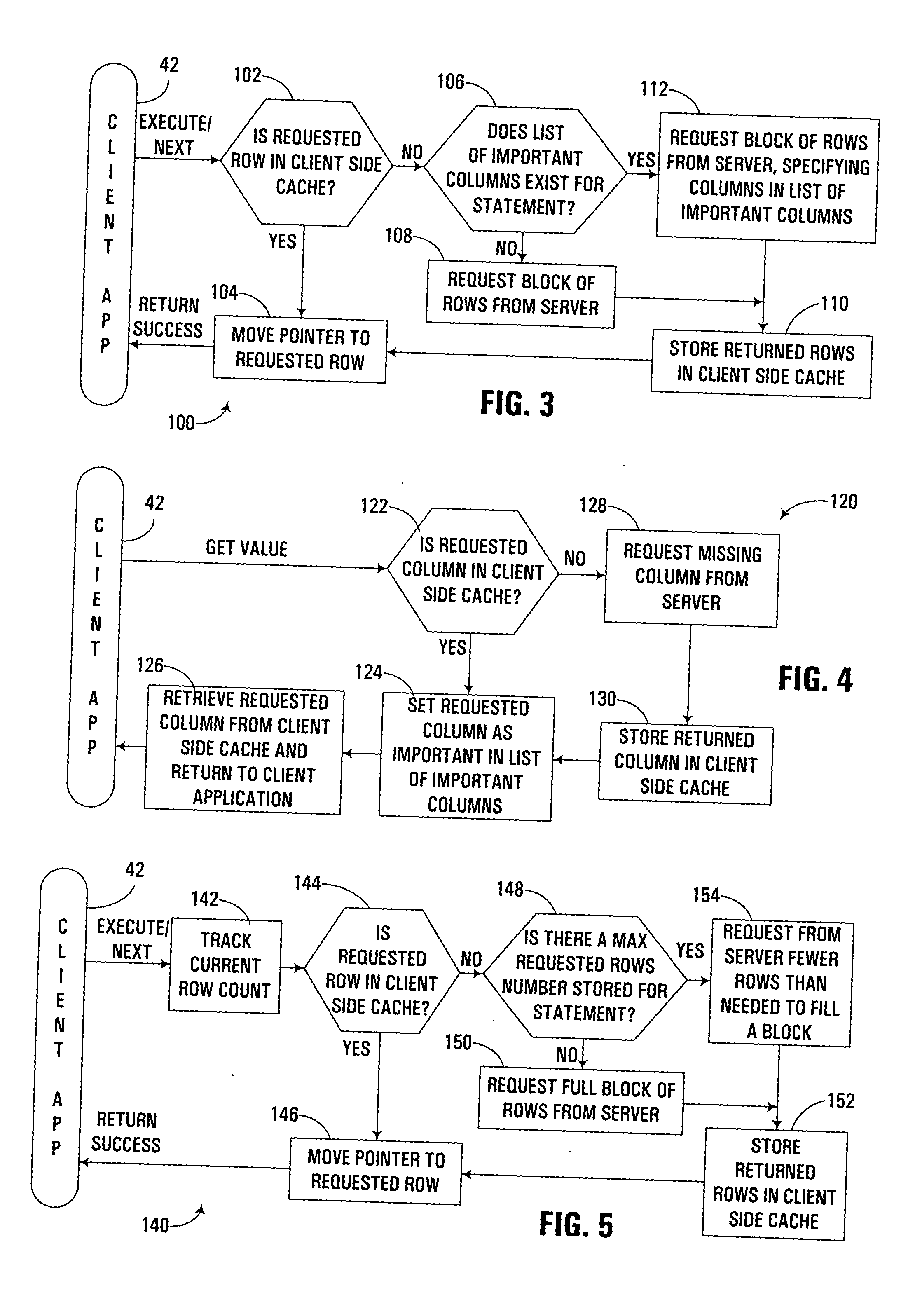Optimization of database network traffic based upon data-use analysis
- Summary
- Abstract
- Description
- Claims
- Application Information
AI Technical Summary
Benefits of technology
Problems solved by technology
Method used
Image
Examples
Embodiment Construction
[0029] Turning now to the Drawings, wherein like numbers denote like parts throughout the several views, FIG. 1 illustrates a client-server based database environment 10 consistent with the invention. System 10 includes at least one apparatus, e.g., one or more client computers 12 and one or more server computers 14. For the purposes of the invention, each computer 12, 14 may represent practically any type of computer, computer system or other programmable electronic device capable of respectively functioning as a client or server in a client-server environment. Moreover, each computer 12, 14 may be implemented using one or more networked computers, e.g., in a cluster or other distributed computing system. Moreover, as is common in many client-server systems, typically multiple client computers 12 will be interfaced with a given server computer 14.
[0030] Computer 12 typically includes a central processing unit 16 including at least one microprocessor 12 coupled to a memory 18, whic...
PUM
 Login to View More
Login to View More Abstract
Description
Claims
Application Information
 Login to View More
Login to View More - R&D
- Intellectual Property
- Life Sciences
- Materials
- Tech Scout
- Unparalleled Data Quality
- Higher Quality Content
- 60% Fewer Hallucinations
Browse by: Latest US Patents, China's latest patents, Technical Efficacy Thesaurus, Application Domain, Technology Topic, Popular Technical Reports.
© 2025 PatSnap. All rights reserved.Legal|Privacy policy|Modern Slavery Act Transparency Statement|Sitemap|About US| Contact US: help@patsnap.com



